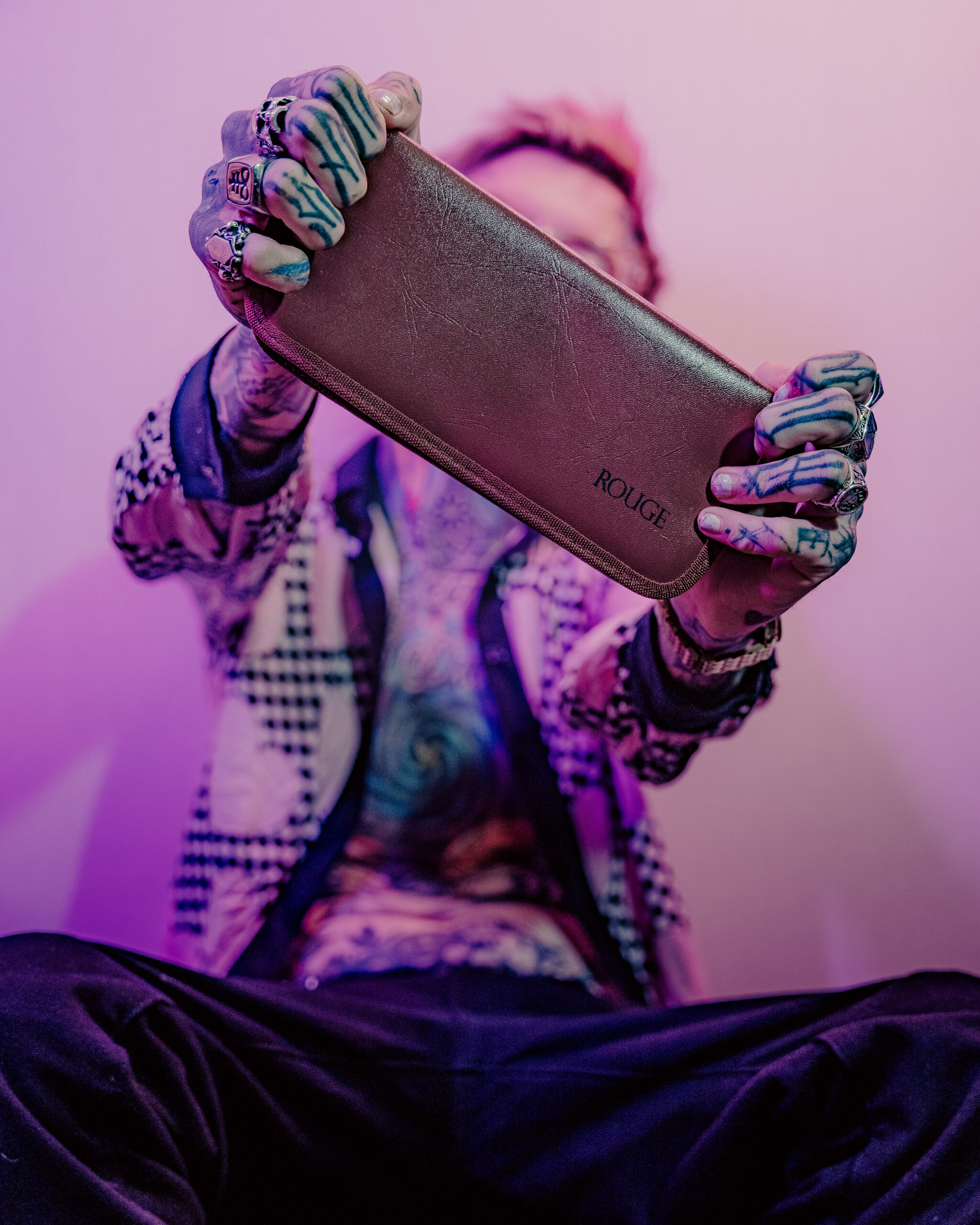What Does It Mean To Be Bisexual?
Bisexuality is a complex and multifaceted sexual orientation that involves attraction to two or more genders. Understanding what it means to be bisexual goes beyond simply acknowledging attraction; it encompasses the lived experiences, challenges, and joys of navigating relationships within this spectrum. This exploration delves into the nuances of bisexuality and its influence on relationship dynamics, shedding light on the diverse ways individuals express their identities and build meaningful connections.
Definition and Understanding
Bisexuality is a sexual orientation characterized by romantic or sexual attraction to two or more genders. It’s important to note that bisexuality is not simply being attracted to both men and women; it can encompass attraction to any combination of genders, including transgender and non-binary individuals.
Here are some key aspects to understanding bisexuality:
- Bisexual people may experience different types of attractions – emotional, physical, or both – towards individuals of various genders.
- Bisexual identities are diverse and can evolve over time as individuals gain self-awareness and explore their attractions.
- Navigating societal expectations and stereotypes surrounding bisexuality can be challenging for bisexual individuals.
Bisexuality influences relationship dynamics in various ways. Bisexual individuals may experience a wider range of relationship structures and dynamics than those who identify with other sexual orientations. For example, they might engage in polyamorous relationships, explore ethical non-monogamy, or have relationships that encompass both men and women.
Ultimately, understanding bisexuality requires recognizing the diversity within this community and embracing the complexity of individual experiences.
Spectrum of Experiences
Bisexuality is a sexual orientation characterized by romantic or sexual attraction to two or more genders. It’s important to note that bisexuality is not simply being attracted to both men and women; it can encompass attraction to any combination of genders, including transgender and non-binary individuals.
Individuals who identify as bisexual may experience different types of attractions – emotional, physical, or both – towards individuals of various genders. Bisexual identities are diverse and can evolve over time as individuals gain self-awareness and explore their attractions.

Navigating societal expectations and stereotypes surrounding bisexuality can be challenging for bisexual individuals. These expectations often create a narrow understanding of bisexuality, limiting the ways in which it is expressed and experienced.
Bisexuality influences relationship dynamics in various ways. Bisexual individuals may experience a wider range of relationship structures and dynamics than those who identify with other sexual orientations. For example, they might engage in polyamorous relationships, explore ethical non-monogamy, or have relationships that encompass both men and women.
Understanding bisexuality requires recognizing the diversity within this community and embracing the complexity of individual experiences.
Internalized Bi Erasure and Prejudice
Bisexuality is a sexual orientation characterized by romantic or sexual attraction to two or more genders. It’s important to note that bisexuality is not simply being attracted to both men and women; it can encompass attraction to any combination of genders, including transgender and non-binary individuals.
Individuals who identify as bisexual may experience different types of attractions – emotional, physical, or both – towards individuals of various genders. Bisexual identities are diverse and can evolve over time as individuals gain self-awareness and explore their attractions.
Navigating societal expectations and stereotypes surrounding bisexuality can be challenging for bisexual individuals. These expectations often create a narrow understanding of bisexuality, limiting the ways in which it is expressed and experienced.
One significant challenge bisexual people face is internalized bi erasure and prejudice. This occurs when individuals internalize negative societal messages about bisexuality, leading them to doubt their own identities or experience feelings of shame or guilt.
- Internalized biphobia can manifest in various ways, such as denying one’s attractions, suppressing feelings, or choosing to label oneself as solely straight or gay.
- This internalization of prejudice can negatively impact mental health, self-esteem, and relationship dynamics.
Bisexuality influences relationship dynamics in various ways. Bisexual individuals may experience a wider range of relationship structures and dynamics than those who identify with other sexual orientations. For example, they might engage in polyamorous relationships, explore ethical non-monogamy, or have relationships that encompass both men and women.
Understanding bisexuality requires recognizing the diversity within this community and embracing the complexity of individual experiences.
Influence on Relationship Dynamics
Bisexuality, a sexual orientation characterized by attraction to two or more genders, extends beyond simple labels. It encompasses the multifaceted experiences, challenges, and joys of individuals navigating relationships within this diverse spectrum. This exploration delves into the complexities of bisexuality and its influence on relationship dynamics, shedding light on the unique ways individuals express their identities and build meaningful connections.
Communication and Expectations
Bisexual individuals often navigate a wider range of relationship structures than those who identify with other sexual orientations. They might engage in polyamorous relationships, explore ethical non-monogamy, or have relationships that encompass both men and women. This flexibility stems from the inherent fluidity of bisexuality, allowing for diverse expressions of love and connection.

Communication plays a crucial role in building healthy relationships for all individuals, but it’s particularly important for bisexual individuals. Open and honest conversations about desires, boundaries, and expectations are essential for navigating the complexities of multiple attractions and relationship structures.
Expectations within bisexual relationships can vary greatly depending on the individuals involved and their unique dynamics. It’s important to remember that there is no one-size-fits-all approach. Some bisexual couples may prioritize monogamy, while others may embrace non-monogamy. Open communication and a willingness to negotiate and adapt are key to meeting each other’s needs and fostering a fulfilling partnership.
Navigating Societal Perceptions and Stigma
Bisexuality is a sexual orientation characterized by romantic or sexual attraction to two or more genders. It’s crucial to understand that bisexuality encompasses a wide spectrum of experiences, and individuals may express their identities and navigate relationships in diverse ways.
One significant aspect to consider is the impact of societal perceptions and stigma on bisexual individuals. Prejudice and misconceptions about bisexuality can create challenges in various aspects of life, including relationships.
These societal expectations often lead to internalized biphobia, where individuals internalize negative messages about bisexuality, causing self-doubt and emotional distress. This can manifest in ways such as denying one’s attractions or suppressing feelings.
Bisexual individuals may also face challenges related to disclosure and coming out. Sharing their sexual orientation with others, whether family, friends, or potential partners, can be a complex and often anxiety-provoking process.
Open communication is paramount in building healthy relationships for bisexual individuals, as it allows them to express their needs, desires, and boundaries clearly. Navigating multiple attractions and potentially complex relationship structures requires honesty and transparency with partners.
Polyamory and Open Relationships
Bisexuality, a sexual orientation characterized by attraction to two or more genders, has a profound impact on relationship dynamics. Bisexual individuals often experience a broader range of relationship structures than those who identify with other sexual orientations.
They may engage in polyamorous relationships, explore ethical non-monogamy, or have relationships that encompass both men and women. This diversity stems from the inherent fluidity of bisexuality, allowing for various expressions of love and connection.
Communication is paramount in these relationships. Open and honest conversations about desires, boundaries, and expectations are essential for navigating the complexities of multiple attractions and relationship structures.

Challenges and Considerations
Bisexuality, a sexual orientation characterized by attraction to two or more genders, influences relationship dynamics in multifaceted ways.
One key aspect is the potential for diverse relationship structures. Bisexual individuals may explore polyamorous relationships, ethical non-monogamy, or relationships encompassing both men and women. This flexibility arises from the inherent fluidity of bisexuality, allowing for various expressions of love and connection.
Open communication is paramount in these relationships. Honest conversations about desires, boundaries, and expectations are crucial for navigating the complexities of multiple attractions and relationship structures.
Understanding and respecting each other’s needs and preferences within the context of bisexuality is essential for building strong and fulfilling partnerships.
Additionally, bisexual individuals may face unique challenges related to societal perceptions and internalized biphobia. Prejudice and misconceptions about bisexuality can create hurdles in relationships, leading to feelings of shame, guilt, or difficulty disclosing one’s orientation.
Creating a supportive and accepting environment where bisexual individuals feel comfortable expressing their true selves is crucial for fostering healthy and lasting relationships.
close breathing position sex
En Bloc Hotels
Stand Seven
- How To Handle Uneven Results After Lip Injections - May 23, 2025
- Top Features Of The Vista Edge Series Vape You Should Know - May 22, 2025
- What Makes Lip Filler Swelling Go Down - May 22, 2025
